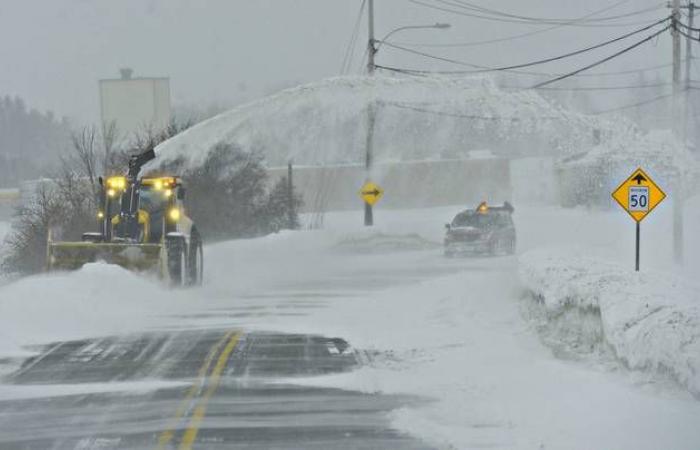At the very beginning of last winter, the Marchand administration clearly announced it: the status quo in terms of snow removal could no longer hold in Quebec.
After a year of thinking about it, the City submitted Wednesday, in committee of the whole, possible solutions to curb the “worrying” increase in annual expenses associated with snow removal, which is constantly increasing.
Last June, the municipal council mandated general management to make recommendations.
To “maintain safe service”, but keep an eye on the bill, municipal officials are proposing an update of the Winter Service Policy, adopted by the Labeaume administration in 2020. Without freeing themselves from it, they submit the possibility to soften it.
Residential streets are the first targets, starting in 2025-2026. “Patience” will become the watchword, advises director Marie-Pierre Raymond.
Year after year, Quebec prides itself on being one of the major Quebec cities that most systematically clears its territory. She now wants to review her scratching deadlines.
“We scratch much more quickly, we have stricter deadlines to complete operations in our residential neighborhoods while all municipalities in Quebec have more logical levels,” compares Martin Forgues, division director at the Maintenance Department traffic lanes.
In the neighborhoods, it is currently expected that the scraping will be carried out in 4 hours, over 80 routes.
“We suggest adjusting the routes to carry out the scraping in 6 to 8 hours. This would bring the number down to around 50 courses,” he explains. The 30 equipment and operators released could be deployed in new areas taken internally.
Quebec prides itself on being one of the major Quebec cities that clears its territory most quickly and systematically. (Archives The Sun)
In doing so, the City of Quebec calculates that 12 million subcontracted to the private sector could be saved, even if certain fixed costs borne by it will still have to be spent.
In the same vein, snow removal crews could take longer than the expected five days to complete loading snow on residential streets without sidewalks.
Quebec does not, however, plan to change the service levels for the main roadways, commercial arteries, those served by RTC buses, eco-routes and sidewalks.
No more resources
In short, the City wants to “do more with what we already have in our hands”. There is no question of buying more machinery, nor of building new garages to store it, nor of adding staff to operate and repair it.
In full negotiation with his blue-collar workers, his strategy plans to “increase the areas which are cleared of snow under management with current resources”.
Even if they cover only 46% of the territory, the areas signed under contract with external suppliers monopolize 60% of the budget and observe a “constant increase”, noted the auditor general in his most recent report, last week.
“We can note that there is a significant gap and that it would be advantageous to work as much as possible with more stable costs under management versus a large part of the territory which is given to contract and which is subject to greater variability due to inflation, the socio-economic context,” notes Martin Forgues.
In 2023, the snow removal budget reached $104.5 million, a growth curve of 40% between 2020 and 2023.
Currently, the snow removal service, over six months, represents the largest expense in Quebec City.
SNOW REMOVAL IN NUMBERS
Four million: average cost of a snow removal operation
$335,960 total cost per cm of snow fallen






